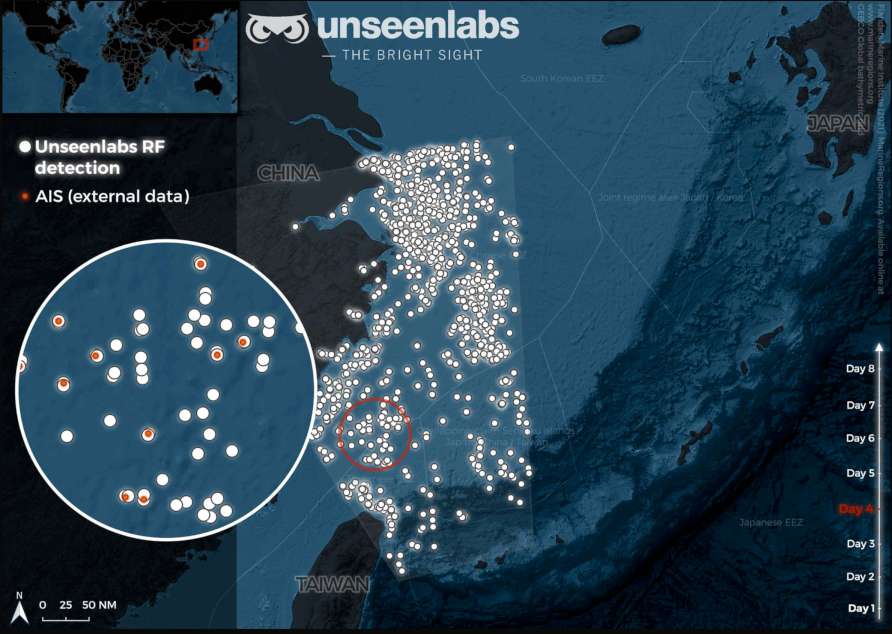
A new Chinese law allows for vessels to turn off their transponders in some of the world's most densely trafficked and tense waterways.
A large number of China's "little blue men," the irregular maritime militia forces that receive support and training from the Chinese government, have gone dark on traditional maritime tracking systems thanks to a new law. The inability to track these ships is worrisome given the role many Chinese fishing and commercial vessels play in Beijing’s plans to assert itself in the South China Sea and the East China Sea, some of the most hotly contested areas of the Pacific.
A new report underscores the safety and intelligence gaps caused by a cybersecurity and data privacy law passed by China last year which caused a large number of Chinese vessels operating in or near the country’s territorial waters to disappear from global tracking systems. The new data detailing the scope of China’s fleet was published by commercial satellite firm Unseen Labs, which specializes in tracking and identifying radiofrequency (RF) transmissions from space.
In a February 18 press release, the company writes that “most ships are not visible from traditional surveillance systems once they get close to Chinese shores” and that “more than 60% of ships in the area have disappeared” from the automatic identification system, or AIS, the global standard for tracking and identifying ships at sea.
UNSEEN LABS
A graphic showing vessels detected by radiofrequency emissions, white, and vessels broadcasting AIS data, red.
AIS data includes a vessel's identity and type, its position, course, speed, navigational status, and other safety and positioning-related information. AIS systems were made mandatory for most ships by the International Maritime Organization in 2004, but included provisions that nations “may exempt certain ships from carrying an AIS.”
Ships that are required to transmit AIS include cargo ships weighing 300 gross tons or more engaged on international voyages, cargo ships weighing 500 gross tons not engaged on international voyages, and all passenger ships. Individual nations also have their own AIS laws that pertain to their waters; in the United States, all commercial self-propelled fishing vessels of 65 feet or more in length must broadcast an AIS signal at all times. Most military vessels are not required to transmit AIS signals and do not regularly do so under low-threat conditions, although the U.S. Navy mandated that ships use the system while transiting congested waters after a pair of damaging collisions in 2017. Currently, most AIS systems are radiofrequency based, meaning they only work ship-to-ship or near coastlines. Multiple nations have been launching satellites since the early 2000s to expand the reach of AIS services, which help offer coverage in areas of the open sea far from shore.
USCG
A U.S. Coast Guard specialist monitors AIS signals in New York Harbor.
To calculate the lack of AIS signals in Chinese waters, Unseen Labs used satellites to detect the RF emissions from ships operating in Chinese waters, and found during one eight-day period that the vast majority of ships operating in the East China Sea were not broadcasting an AIS signal. “As a result, most ships are not visible from traditional surveillance systems once they get close to Chinese shores. In this new context, the AIS system doesn’t provide an accurate picture of...
Read More HERE


2 comments:
Taiwan is next... God Save Us.
And so it begins
Post a Comment